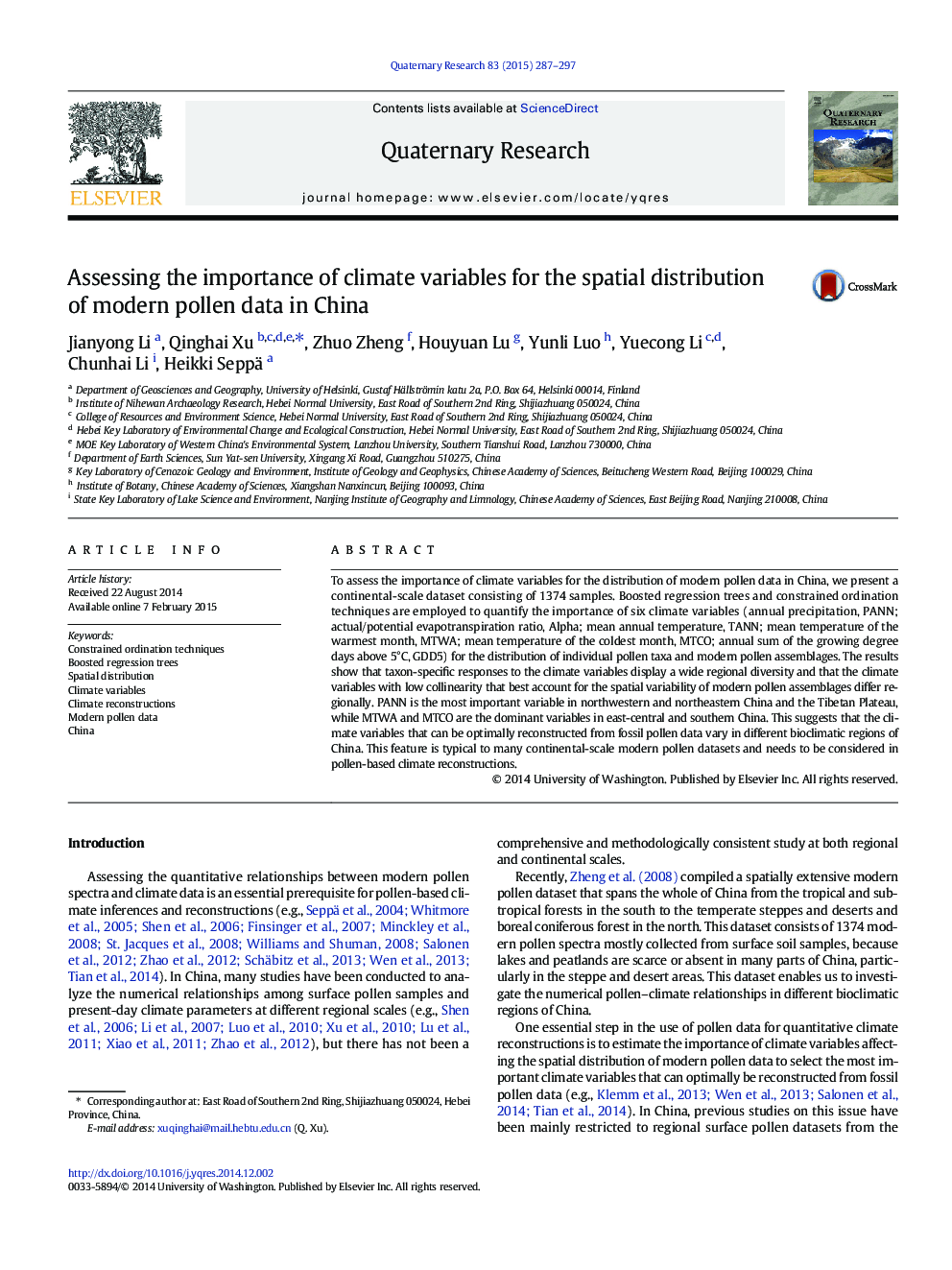| Article ID | Journal | Published Year | Pages | File Type |
|---|---|---|---|---|
| 1045143 | Quaternary Research | 2015 | 11 Pages |
Abstract
To assess the importance of climate variables for the distribution of modern pollen data in China, we present a continental-scale dataset consisting of 1374 samples. Boosted regression trees and constrained ordination techniques are employed to quantify the importance of six climate variables (annual precipitation, PANN; actual/potential evapotranspiration ratio, Alpha; mean annual temperature, TANN; mean temperature of the warmest month, MTWA; mean temperature of the coldest month, MTCO; annual sum of the growing degree days above 5°C, GDD5) for the distribution of individual pollen taxa and modern pollen assemblages. The results show that taxon-specific responses to the climate variables display a wide regional diversity and that the climate variables with low collinearity that best account for the spatial variability of modern pollen assemblages differ regionally. PANN is the most important variable in northwestern and northeastern China and the Tibetan Plateau, while MTWA and MTCO are the dominant variables in east-central and southern China. This suggests that the climate variables that can be optimally reconstructed from fossil pollen data vary in different bioclimatic regions of China. This feature is typical to many continental-scale modern pollen datasets and needs to be considered in pollen-based climate reconstructions.
Related Topics
Physical Sciences and Engineering
Earth and Planetary Sciences
Geology
Authors
Jianyong Li, Qinghai Xu, Zhuo Zheng, Houyuan Lu, Yunli Luo, Yuecong Li, Chunhai Li, Heikki Seppä,
